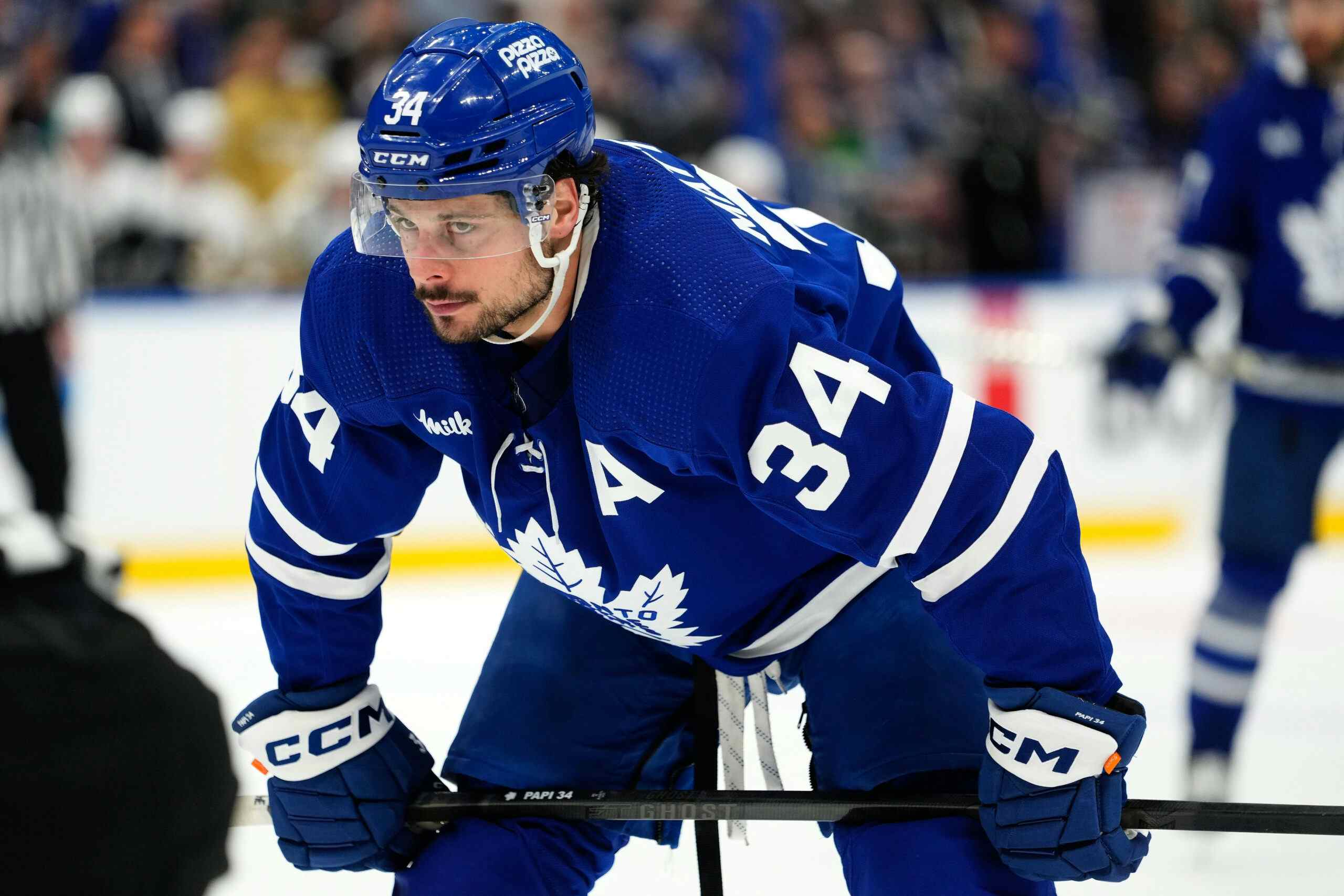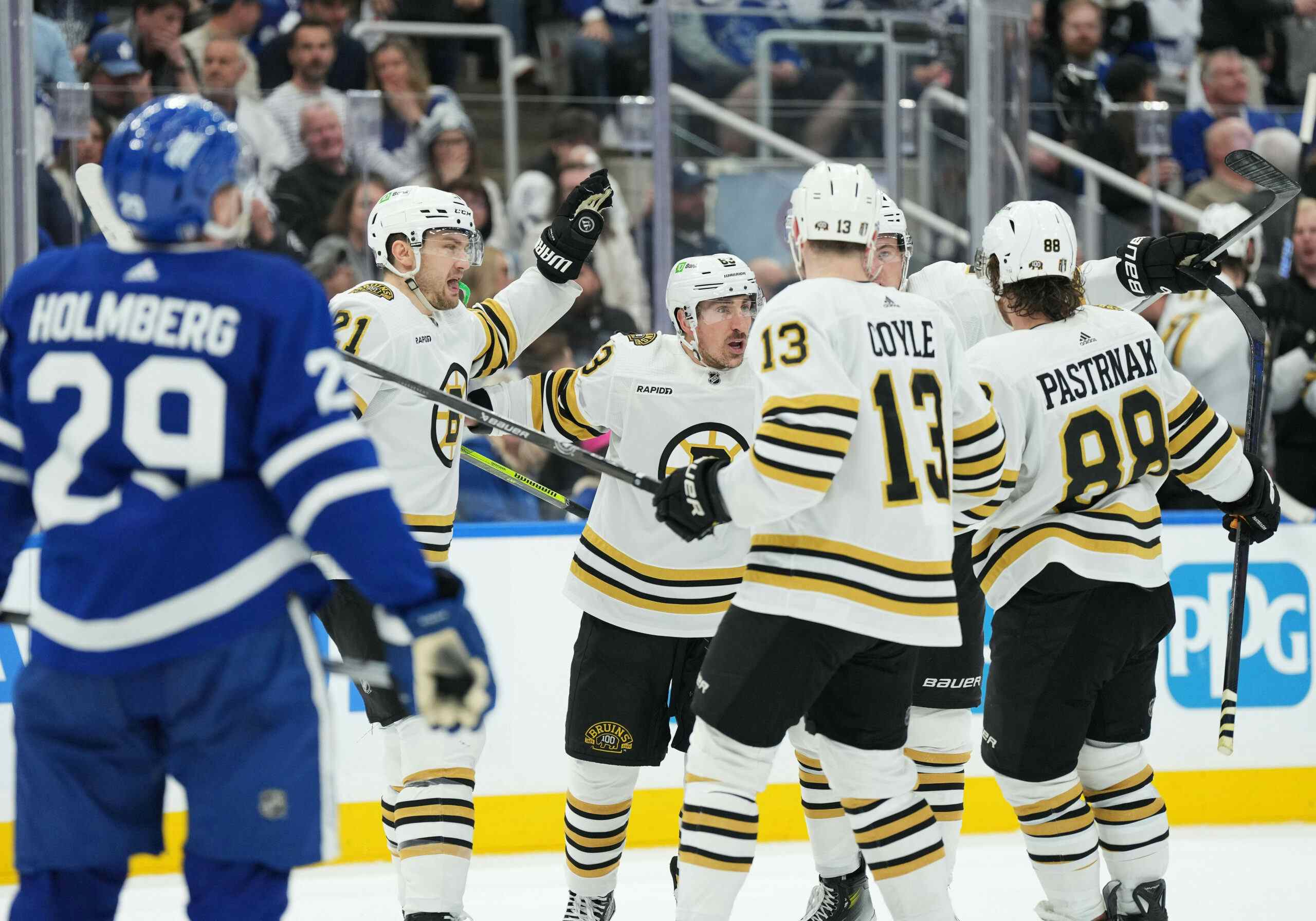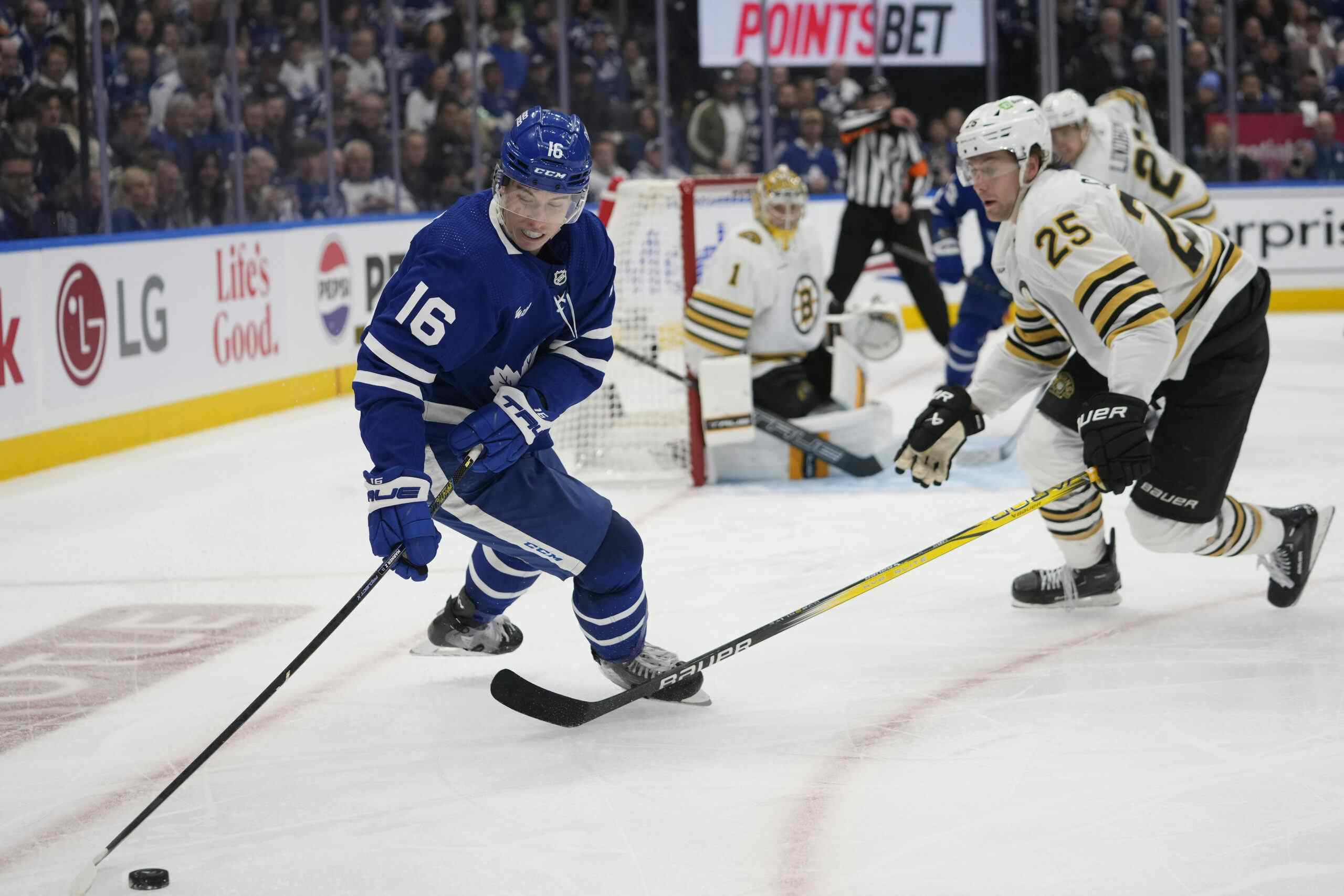Does defence actually win championships?


Photo Credit: Charles Leclaire/USA TODAY SPORTS
Things have been stressful of late. The Toronto Maple Leafs have lost six of their last eight games, and while they’re hanging onto a playoff spot, there’s a lot of questioning as to whether that’ll last. Unsurprisingly, the same topic that comes up during every losing streak has come up again; the defence.
The Leafs need to fix their defensive woes. They are bad defensively. They outscore their opponents, they outshoot them, and they’re still 12th overall by points percentage despite this losing skid. But that isn’t enough, and it won’t be enough in the future. Because, they can score their brains out, but that doesn’t win rings. As we all know, defence wins championships.
That’s true everywhere. Hockey, soccer, football, basketball… tennis? It’s a popular trope across the sporting world, presumably because that belief aligns favourably with the philosophy of work ethic, systematic buy in, and self-responsibility. The values the idea tries to instil are great, and ones I’d want my hockey team to carry into the battlefield.
But, is the actual defence part really that important to the end result, to the point where the Leafs need to re-envision their priorities? Are the best defensive teams the ones that are really coming out on top? How have recent champions won their trophies? Here’s a look at what does, and doesn’t unite them.
Detroit Red Wings (2008)

How fitting that this era starts with a Mike Babcock team, right? The 2007/08 Detroit Red Wings, in terms of how they controlled the flow of play, were probably among the greatest teams of the big-league era. They put up some of the best offensive and defensive numbers of the decade, and as such, saw some disgustingly good differentials that nobody’s really touched since.
But, while they were supremely elite defensively, it looks like Detroit set themselves further apart in the playoffs by shooting even more, rather than getting tighter defensively. After all, this was still an offensively driven team; just one that happened to have Nicklas Lidstrom, Brian Rafalski, and Niklas Kronwall roaming the point, and Pavel Datsyuk and Henrik Zetterberg at their two-way peak up front. Detroit wasn’t so much “clamping down” as they were constantly skating around with possession, making it difficult for opponents to spend much time in their zone. Once they got there, opponents actually saw more of their shot attempts hit the net than most teams (even this year’s Leafs keep more attempts against away from the net), but being there was just that much of a rarity.
Pittsburgh Penguins (2009, 2016)

Looking at the underlying numbers of the first Penguins cup team doesn’t really tell the whole story, seeing as the team was dreadful under Michel Therrien and got into gear under Dan Bylsma. Even still, they’re a team that was adept at keeping the puck out of high-danger areas but still leaned towards their offensive weapons rather than standing back. With Sidney Crosby and Evgeni Malkin in the prime of their youth, how could you blame them?
Last year’s team was very similar. They weren’t awful defensively; above average in fact, but they relied on the fact that every line in their top nine had a star forward (Crosby, Malkin, Kessel), and that the team was mobile enough to keep opponents chasing after them. Their offence was Top-3 in the league, their differentials were similar, and come the playoffs, they left everybody in the dust, finding another gear to squeeze more efforts in.
Something both Penguins teams did well? They got in the way of opposing traffic. In both years, the Penguins brought the percentage of attempts against them that hit the net to below 50% come playoff time, which no other cup winners in this decade were able to do.
Chicago Blackhawks (2010, 2013, 2015)

The Hawks have had some interesting years. The 2010 team was dominant on both sides of the ice but stepped back drastically during the playoffs, particularly in their defensive prowess. The lockout year team stormed through the league by being good on both sides of the ice with a defensive slant, and largely maintained that into the playoffs.
The 2015 team? Potent offensively, slightly above average at keeping teams out of their zone, awful at keeping those shots away from the net, but bailed out by Corey Crawford. Come the playoffs, they didn’t really do a ton to separate themselves from their peers, and actually saw their numbers fall on both sides of the game. Again, though, all of these Hawks cores had at least three huge-name forwards, and potent offensive defenceman in Duncan Keith to help drive the puck up.
Boston Bruins (2011)

The Boston Bruins will forever be known as the team that beat their way up to winning a Stanley Cup. Teams spent years trying to follow the “Boston Model” of intimidating their way to victory, but what should’ve been equally apparent was that the team, well, had a lot of scoring depth. Krejci, Bergeron, Lucic, Marchand, Horton, Ryder, half a Seguin, the last remaining juice out of Mark Recchi’s bones… even players like Chris Kelly and Rich Peverley chipped in. Toronto’s very own Tomas Kaberle gave them some puck-moving ability on a defence that already had Zdeno Chara. Hitting didn’t help them much, and they were so intimidating defensively that teams… took more dangerous shots on them than nearly any other cup winner of the decade, but they got the job done.
Los Angeles Kings (2012, 2014)

The Kings are really interesting, in the sense that their first Cup team was touted by the stats community as a dark horse and written off by the mainstream media as just another stepping stone in the Vancouver Canucks revenge tour. Of course, those Kings went 16-4 and bulldozed their way to the Stanley Cup. Two years later, they played a similar game with a similar group and saw similar results, though this time, they had more luck in the regular season, and had the public perception of being an elite team attached to them from the run prior.
Both Kings rosters were great on both sides of the ice, putting up top end offensive and defensive numbers in the regular season. The 2012 team was a bit better defensively (6th in xGA vs 13th in xGF), while the opposite was true in 2014 (4th in xGF, 8th in xGA). Visually, the Kings appear to have been the last true survivors of the dump and chase era, with a particularly aggressive and risky cycle that works for them thanks to the team’s raw strength and surprising mobility. Come playoff time, LA took fewer shots and gave up more in than they did in the regular season, in both years. They did manage, however, to keep a higher ratio of the ones they faced out of harm’s way (more so in 2012), which played to their benefit.
But, just like the other teams, it’s worth remember that raw roster depth mattered a lot here too. Anze Kopitar, Dustin Brown, Drew Doughty, Mike Richards, Justin Williams, Jeff Carter, and Dustin Penner all scored at 0.55 points/game or higher, with the first six matching or exceeding 0.75. Richards wasn’t as good in 2014 and Penner was gone, but they injected Marian Gaborik into the mix and saw coming out parties from the likes of Tyler Toffoli, Jake Muzzin, and Tanner Pearson. Lastly, Jonathan Quick using his god mode cheat code both years made a world of difference.
What Do They Have In Common?
So we’ve seen offensive teams, defensive teams, possession teams, dump and chase teams, soft teams and tough teams. There’s not a united visual identity that really links the Penguins, Blackhawks, Kings, Red Wings, and Bruins of the past decade, beyond having an NHL logo on the neck of their jerseys.
The two things that they all have most in common though:
- An ability to push differential. The raw number of how many attempts, shots, chances, goals, whatever, for or against, doesn’t seem to matter here. You just want to be elite at doing these things more often than not. You can do that by being a high octane team that torches teams but gets burned a bit from the shockwave, you can do it by locking games down and squeaking out just enough to come out ahead. But controlling your own style is key, above all else. Seven of the last nine Stanley Cup Champions have finished 1st to 3rd overall in Score-Adjusted Corsi, with the two outliers (the 2011 Bruins and 2009 Penguins) being no slouches themselves; Boston was 7th, and while Pittsburgh was 19th, they were 7th in the stretch that followed Dan Bylsma’s hiring. Similar rings true with pretty much every differential.
- Depth. Because being great at shot metrics isn’t something that you do to win games; it’s the expected byproduct of a team that’s legitimately good at controlling play. Every single one of these teams were filled to the brim with legitimate, quality NHL players with a couple of superstars to lead the way, and that depth mostly came at forward for a bunch of them. Sure, your Lidstrom’s, Chara’s, Doughty’s, Keith’s, Letang’s all existed, but it’s not super often that we see three pairs of established, medium to high-profile defencemen run a show in the summer.
The reality is, as the season progresses, players get tired and the games get riskier. Having a good defensive group helps, but being able to spread out your minutes and have players that can take advantage of opportunities up front makes a world of difference. From a skater perspective, you win in the postseason through relentlessness, not through protection.
Is defence useless? No. It’d be really awesome if the Leafs can find a way to have the depth at the back to match what they have up front. But right now, they’ve got a really special thing going with their already elite and just getting started forward core, with three lines that can hand a teach their lunch on a given night and have room to, if they so decide, make the fourth line have the same impact in the future.
Maybe it’s not worth it for them to dive too ferociously into a trope that doesn’t seem to be an absolute necessity in the victory process, despite getting the air time that reflects otherwise and player acquisition costs that could cripple a team’s offensive core by trying to patch the perceived voids. Maybe it’s more efficient, and more sensible, to capitalize the strengths you already have, and address the weaknesses as the opportunity arises, rather than at the sacrifice of your head start.

Is Toronto good enough at their strengths to cancel out their weaknesses? Barring an extreme run of luck, they’re probably not good enough for sixteen playoff wins yet; possibly not even for eight or even four. But at the end of the day, if we look at it as “being better wins championships” instead, which recent history seems to agree with more than the strict defence approach, they’re probably off to a good start.
It’s up to them to find the most efficient ways to build upon what they have now moving forward, but if I’m not convinced that it has to be done in direction that’s most obvious on the surface.
Recent articles from Jeff Veillette





